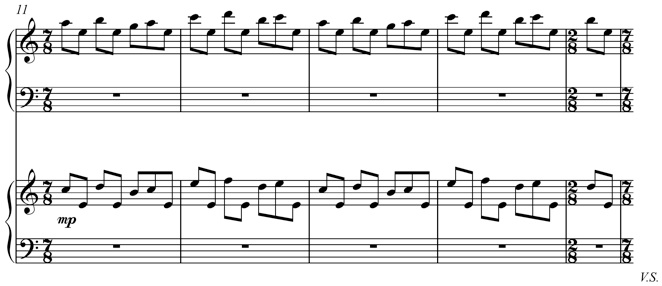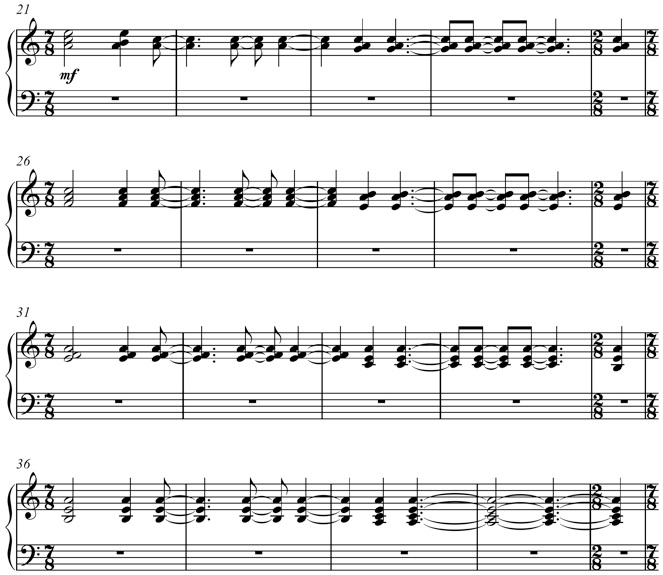Remixular Bells

composer
educator
technology specialist

home


Listening
Playback the first 4 minutes of Tubular Bells by Mike Oldfield. You will notice that he uses a compositional device called layering. He introduces different ostinati and layers each one on top of the other.
The first layer is the piano. He introduces it solo, with an anacrusis (not heard below, but seen in the score) from E (the last note of the pattern):

The second and third layers are the glockenspiel and electric clavichord. These instruments simply double the piano, the glockenspiel an octave higher. They repeat 7 times, making 8 complete repeats of this ostinato (repeated pattern) before the bass and second piano part enter.
The fourth layer is the second piano part. It is very similar to the first piano part, being transposed down an octave but with the top voice a third higher. This creates simple parallel harmony.

Together, the two piano parts sound like this:


The fifth layer is added at the same time as the second piano part, and is the first bass part. It is quite loose, but here is an approximate transcription and recording:

After two repetitions of these five parts in combination, a single “hit” is added on a synthesiser in the first bar of the 5 bar pattern. There, after another 6 repetitions with this combination (the “hit” is played every second repetition) there is a change in texture as the bass 1 part changes to bass 2 to fit with another added layer, the third piano part, which plays syncopated chords:

Note that this is the first pattern which is longer than just 5 bars. The new bass pattern is also 20 bars long.
Your listening task:
Using graph paper, draw a structural map showing which bar each instrument enters and for how many bars it keeps repeating. The above will give you enough information for the first 2 minutes of the recording: complete the first 4 minutes. Use the above recordings to help you identify the entries.
When you’ve completed this, you can go to the next task, or you can return to the first page.






